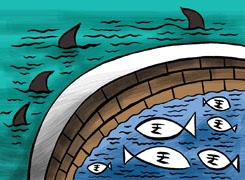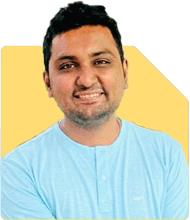Sanjeev Govila | Answer |Ask -Follow
Financial Planner - Answered on May 19, 2023
He has over 12 years of experience in financial planning and is a SEBI certified registered investment advisor; he is also accredited with AMFI and IRDA.... more

Which is better an actively managed mutual fund or a passive(index fund)mutual fund and why?
Large cap funds are facing a tough ‘competition’ from Index Funds due to two main reasons. First, Large cap funds can only invest in top 100 stocks of the market as per market capitalisation and that is where Index too is. The index keeps rejigging itself based on various parameters and generally it has been seen that most of the Large Cap funds too get invested in similar good stocks, leaving hardly any difference between the percentage-wise investment of the two.
And the Second reason is the one that makes the difference – the expenses that are charged by the two. Since an Index fund is a passive one with hardly any ‘management’ being done by the fund manager except tracking the index accurately, it charges very less expenses. On the other hand, Large cap funds have active monitoring and efforts involved and hence, more charges are there.
So it is quite common for an Index fund to outperform a Large cap fund in many cases.
The same logic does not stand true for other categories like midcap and small cap where the universe of stocks to be selected is vast and most of the time, passive funds lag quite behind the active funds in selection of the right stocks.
You may like to see similar questions and answers below
Sanjeev Govila | Answer |Ask -Follow
Financial Planner - Answered on Jan 06, 2023
Nikunj Saraf | Answer |Ask -Follow
Mutual Funds Expert - Answered on May 23, 2023
Ramalingam Kalirajan |10288 Answers |Ask -Follow
Mutual Funds, Financial Planning Expert - Answered on May 06, 2024
Ramalingam Kalirajan |10288 Answers |Ask -Follow
Mutual Funds, Financial Planning Expert - Answered on May 31, 2024
Abhishek Shah |77 Answers |Ask -Follow
HR Expert - Answered on Aug 19, 2025
Dr Nagarajan J S K |2327 Answers |Ask -Follow
NEET, Medical, Pharmacy Careers - Answered on Aug 19, 2025
Dr Nagarajan J S K |2327 Answers |Ask -Follow
NEET, Medical, Pharmacy Careers - Answered on Aug 19, 2025
Dr Nagarajan J S K |2327 Answers |Ask -Follow
NEET, Medical, Pharmacy Careers - Answered on Aug 19, 2025
Dr Nagarajan J S K |2327 Answers |Ask -Follow
NEET, Medical, Pharmacy Careers - Answered on Aug 19, 2025
Dr Nagarajan J S K |2327 Answers |Ask -Follow
NEET, Medical, Pharmacy Careers - Answered on Aug 19, 2025
Dr Nagarajan J S K |2327 Answers |Ask -Follow
NEET, Medical, Pharmacy Careers - Answered on Aug 19, 2025
Dr Nagarajan J S K |2327 Answers |Ask -Follow
NEET, Medical, Pharmacy Careers - Answered on Aug 19, 2025
Dr Nagarajan J S K |2327 Answers |Ask -Follow
NEET, Medical, Pharmacy Careers - Answered on Aug 19, 2025
Dr Nagarajan J S K |2327 Answers |Ask -Follow
NEET, Medical, Pharmacy Careers - Answered on Aug 19, 2025




















